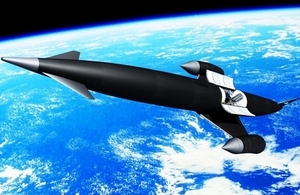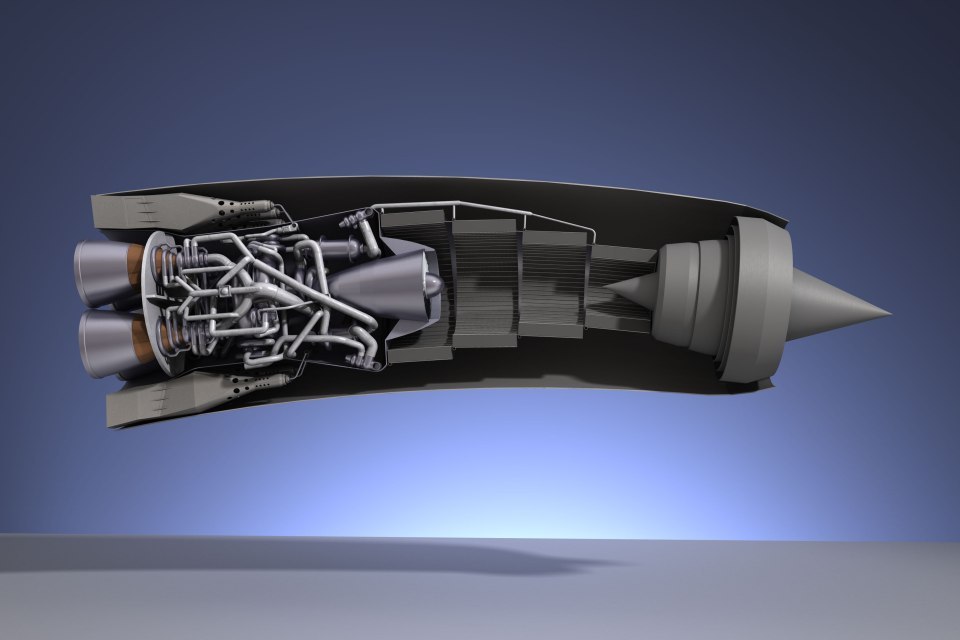The SABRE engine and new launch technologies
SABRE is a rocket engine designed to power aircraft directly into space to allow reliable, responsive and cost effective space access.

Artist's impression of Skylon in orbit. Credit: Reaction Engines.

Artist's impression of SABRE. Credit: Reaction Engines.
In the past, attempts to design single stage to orbit propulsion systems have been unsuccessful largely due to the weight of an on-board oxidiser such as liquid oxygen, needed by conventional rocket engines. One possible solution to reduce the quantity of on-board oxidizer required is by using oxygen already present in the atmosphere in the combustion process just like an ordinary jet engine. This weight saving would enable the transition from single-use multi-stage launch vehicles to multi-use single stage launch vehicles.
SABRE is the first engine to achieve this goal by operating in two rocket modes: initially in air-breathing mode and subsequently in conventional rocket mode:
- air breathing mode - the rocket engine sucks in atmospheric air as a source of oxygen (as in a typical jet engine) to burn with its liquid hydrogen fuel in the rocket combustion chamber
- conventional rocket mode - the engine is above the atmosphere and transitions to using conventional on-board liquid oxygen
SKYLON
An unpiloted, reusable single stage to orbit (SSTO) spaceplane that will provide reliable access to space and be capable of delivering payloads of up to 15 tonnes into Low Earth Orbit (LEO, approx. 300km) at about 1/50th of the cost of traditional expendable launch vehicles, such as rockets. SKYLON’s SABRE engines use liquid hydrogen combined with oxygen from the air at altitudes up to 26km and speeds of up to Mach 5, before switching over to on-board liquid oxygen for the final stage of ascent.
The SKYLON technical assessment concluded that ‘no impediments or critical items have been identified for either the SKYLON vehicle or the SABRE engine that are a block to further developments’.